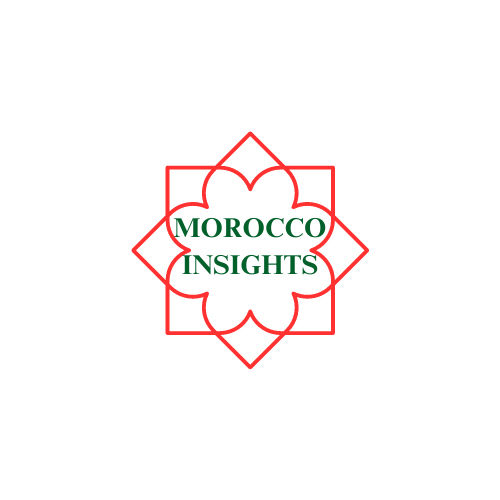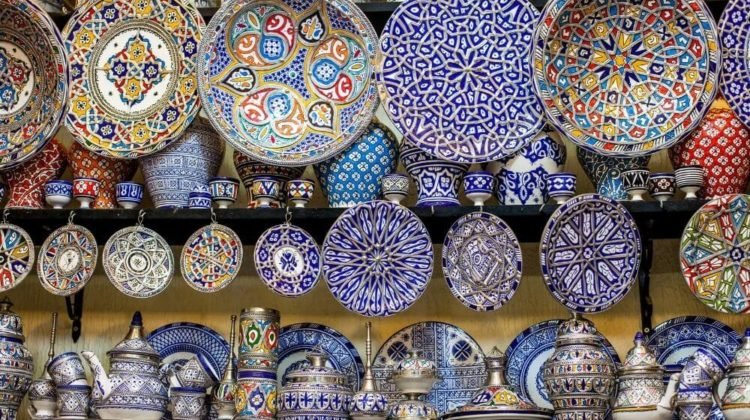Moroccan pottery is a testament to the country’s rich artistic heritage, characterized by intricate designs and an earthy color palette. Each piece of pottery is crafted with meticulous precision, reflecting the diverse landscape and cultural influences of Morocco. From the bustling souks to the family-led workshops, artisans uphold a philosophy of preserving identity and sustaining communities. Moroccan pottery is not just a decorative item; it is an ambassador of the country’s history and a symbol of hospitality. In a world of mass production, artisans are embracing the digital age to share their craft with wider audiences and ensure its survival for future generations.
Morocco’s Rich Artisanship
Morocco’s rich tapestry of culture is vividly embodied in its artisanship. A legacy of skilled hands and deep-rooted traditions, Moroccan artisans carry the torch of their ancestors, crafting items that are not just products but narrators of an ancient story. The enigma of Moroccan crafts lies in their diversity, from the labyrinthine Zellige tilework that adorns palaces and mosques to the hand-woven textiles that tell tales of the Berber heritage.
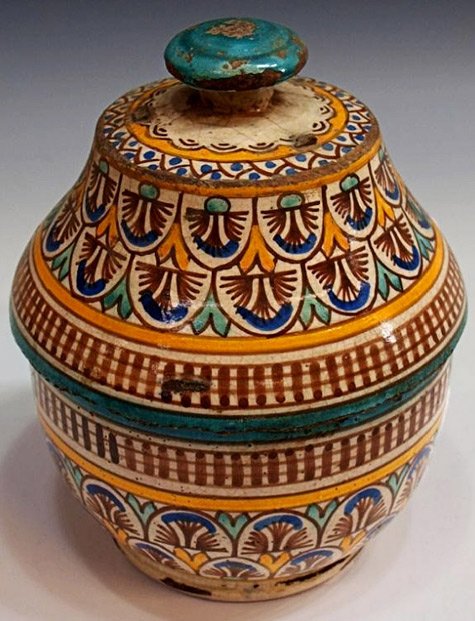
This image is property of moroccotravelblog.com.
The Enigma of Moroccan Pottery
When one thinks of Moroccan artisanship, the mind paints images of bustling souks, a symphony of colors, textures, and the gentle hum of creation. Questions that enthusiasts and curious minds often ask reflect a world keen to embrace the Moroccan way of life through its artisanal gateway. They inquire about the distinct techniques in Moroccan pottery, characterized by intricate designs and an earthy palette drawn from the nation’s diverse landscape.
Moroccan pottery is known for its intricate designs and earthy palette, reflecting the country’s vibrant culture and natural beauty. Each piece of pottery tells a story, with patterns and motifs that have been passed down through generations. From the famous blue and white ceramics of Fes to the vibrant reds and oranges of Marrakech, Moroccan pottery embodies the essence of Moroccan artisanship.
Zellige Tiles: A Kaleidoscope of Art
Another craft that is synonymous with Moroccan artisanship is the creation of Zellige tiles. These hand-chiseled pieces come together in a mesmerizing puzzle, adorning the walls and floors of palaces, mosques, and other significant structures. The origins of Zellige tiles date back to the 10th century and showcase the intricate beauty and precision that Moroccan artisans are capable of.
Zellige tiles are made by hand, with each piece carefully shaped and chiseled before being fit together like a jigsaw puzzle. The result is a stunning mosaic of colors and patterns that create a sense of awe and wonder. These tiles are not only decorative but also serve as a testament to the skill and craftsmanship of Moroccan artisans.
Leatherworking in Fez
Leatherworking in Fez is a centuries-old craft that continues to thrive today. The city is renowned for its tanneries, where leather is processed using traditional techniques that have been passed down through generations. The leather goods produced in Fez are known for their quality and craftsmanship, attracting visitors from all over the world.
The traditional tanning processes used in Fez involve a combination of natural ingredients and techniques that have been perfected over time. Animal hides are treated with a mixture of natural dyes and oils, resulting in soft and supple leather. The artisans in Fez take great pride in their work, and the leather goods they produce are a testament to their skill and dedication.
Moroccan Rugs: Weaving Stories
Moroccan rugs, especially those from the Atlas region, are a true work of art. These hand-woven textiles capture the essence of nomadic life and tell stories through their patterns and designs. Each rug is unique, with intricate details and vibrant colors that reflect the rich cultural heritage of Morocco.
The significance of patterns in Moroccan rugs cannot be overstated. These patterns are not just decorative but hold deep meaning, representing elements of Berber culture and the natural world. From geometric shapes to symbols of protection and fertility, each rug tells a story that has been passed down through generations.

This image is property of www.veniceclayartists.com.
Berber Jewelry: Bold Expressions
Berber jewelry is a bold expression of identity and culture. Each piece is meticulously crafted, reflecting the rich symbolism and heritage of the Berber people. From intricate silver designs to vibrant gemstones, Berber jewelry is a testament to the skill and artistry of Moroccan artisans.
The bold designs of Berber jewelry are a reflection of the culture’s strong sense of identity. Each piece tells a story, with symbols and motifs that hold deep meaning. Berber jewelry is not just decorative but serves as a form of protection and a way to honor tradition.
Preserving Heritage Through Craft
Moroccan artisans play a vital role in preserving the country’s cultural heritage. Many crafts are passed down through generations, with family-led workshops and cooperatives continuing the traditions of their ancestors. These artisans craft with purpose, ensuring that each piece carries the heartbeat of Moroccan culture.
Crafting with purpose also means ensuring the longevity of these traditions. Artisans are committed to cultural preservation, taking steps to pass on their knowledge and skills to future generations. By supporting these artisans and purchasing their crafts, individuals can contribute to the preservation of Morocco’s rich cultural heritage.
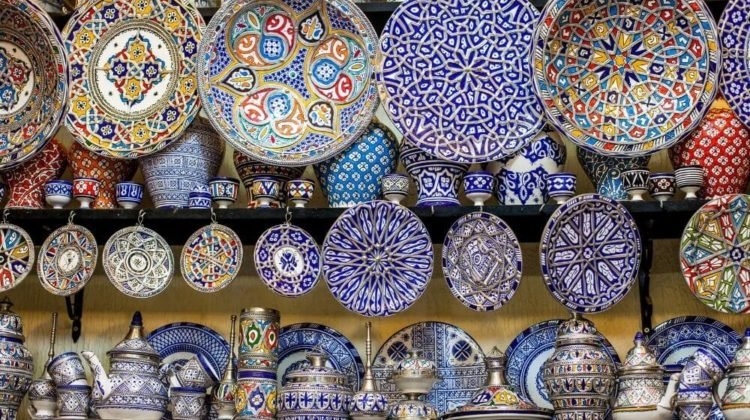
This image is property of www.moroccopedia.com.
Artisanship as Ambassadors of Moroccan Culture
Moroccan artisanship is a reflection of the country’s history and diverse influences. From Arabic and Berber roots to African and Andalusian connections, Moroccan crafts echo the many facets of the nation’s culture. Islamic influence is evident in the intricate geometric designs, while natural materials showcase the country’s stunning landscapes.
Artisans serve as ambassadors of Moroccan culture, spreading its influence and beauty around the world. Their crafts are a window into the rich history and heritage of the country, allowing individuals to connect with Morocco on a deeper level. By embracing Moroccan artisanship, individuals can cultivate a greater understanding and appreciation for the country’s vibrant culture.
Sustainability in Moroccan Artisanship
As the world becomes more environmentally conscious, sustainability has become an important aspect of Moroccan artisanship. Artisans are adapting traditional methods to meet the ethos of eco-friendly production, using natural and locally sourced materials whenever possible. This ensures that their crafts have a minimal impact on the environment.
Adapting traditional methods for eco-friendly production is not without challenges. Artisans must strike a balance between preserving tradition and embracing sustainability. By finding innovative solutions and incorporating sustainable practices, Moroccan artisans are able to maintain the beauty and integrity of their crafts while protecting the environment for future generations.
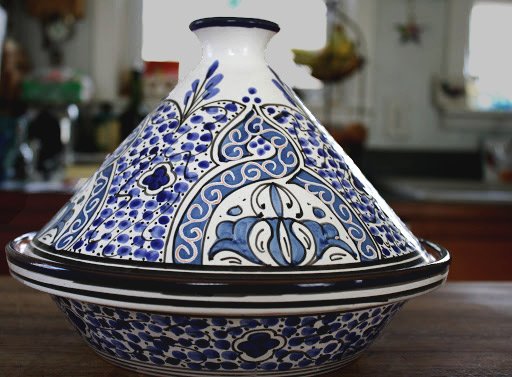
This image is property of www.veniceclayartists.com.
Challenges Faced by Moroccan Artisans
Moroccan artisans face a unique set of challenges in an increasingly globalized world. One of the greatest challenges is the battle against mass production, which threatens to undermine the uniqueness and value of handcrafted goods. The rise of cheap, mass-produced imitations makes it difficult for artisans to compete in the market.
However, Moroccan artisans are not deterred. They are embracing the digital age, using technology to reach wider markets and preserve their precious craft for future generations. Through online platforms and social media, artisans are able to showcase their work to a global audience, creating new opportunities and connections.
In conclusion, Moroccan artisanship is a treasure trove of culture and heritage. From pottery to Zellige tiles, leatherworking to rug weaving, each craft embodies the essence of Moroccan culture. Through their work, artisans preserve and promote Moroccan traditions, ensuring that the country’s rich artisanship continues to thrive. By supporting Moroccan artisans, individuals can not only acquire unique and beautiful crafts but also contribute to the preservation of Morocco’s cultural heritage.
